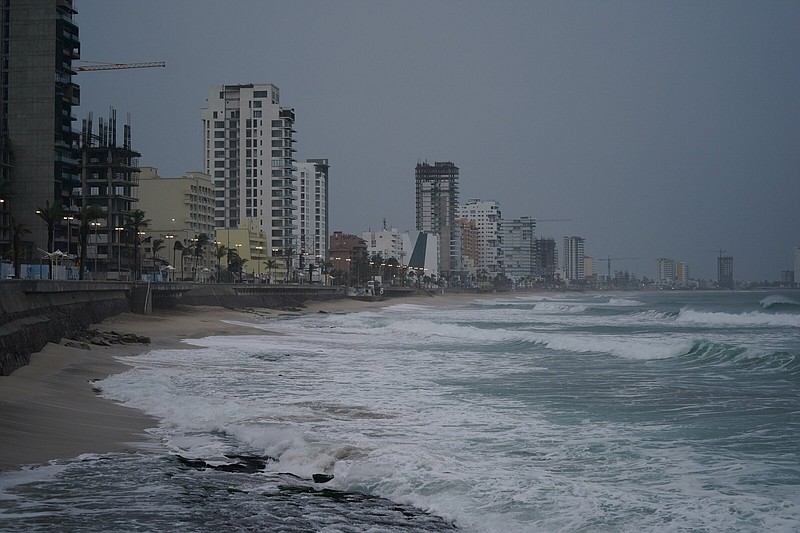MAZATLAN, Mexico -- Hurricane Orlene made landfall on Mexico's Pacific coast near the tourist town of Mazatlan on Monday before quickly weakening over western Mexico.
The storm landed just north of the border between the states of Nayarit and Sinaloa around 9:45 a.m. Eastern time, with maximum sustained winds estimated to be 85 mph, the National Hurricane Center said. By 11 a.m., its winds had eased to about 75 mph as it moved on a path about 50 miles east-southeast of Mazatlan, the forecasters said.
Category 1 storms are hurricanes with wind speeds of 74 to 95 mph. Orlene's strength peaked as a Category 4 storm Sunday, with maximum sustained winds of 130 mph.
Nayarit and portions of Sinaloa, states along the country's west coast, could see up to 10 inches of rain. Mexico's meteorological service said landfall took place about 3 miles from Isla del Bosque, a city in Sinaloa. The service said heavy rain could cause streams and rivers to swell, leading to flooding in parts of the state, and in Nayarit, to its south.
Orlene was expected to weaken rapidly and to dissipate today, the hurricane center said.
Electrical cables swayed and sent off showers of sparks in the town of El Rosario, about 40 miles south of Mazatlan, close to where the hurricane hit.
Orlene lost some strength after roaring over the Islas Maria, a former prison colony being developed as a tourist draw. The main island is sparsely populated, mainly by government employees, and most buildings there are made of brick or concrete.
The hurricane's winds, once at Category 4 force, had slipped back to 85 mph mph as it hit land about 45 miles southeast of Mazatlan Monday morning, according to the U.S. National Hurricane Center.
Authorities did not immediately report any damage, but along the coast they suspended classes, closed seaports and set up shelters.
By midday, Orlene had weakened to a tropical storm with maximum sustained winds of 50 mph and was moving north-northeast at 10 mph. The storm was 60 miles east of Mazatlan.
A hurricane warning was discontinued for Las Islas Marias, an archipelago of four islands, but a warning remained in effect for the coast of mainland Mexico, from San Blas to Mazatlan, meaning hurricane conditions were expected in those areas, the center said.
The government of Jalisco state, where Puerto Vallarta is located, suspended classes Monday in towns and cities along the coast.
In Sinaloa, where Mazatlan is located, some emergency shelters were opened.
Orlene could bring flood-inducing rainfall of up to 10 inches in some places, as well as coastal flooding and dangerous surf.
The ports of Manzanillo and Puerto Vallarta were closed to ships and Mexico's navy announced that ports including Mazatlan, San Blas and Nuevo Vallarta were closed to small craft.
Mexico's National Water Commission said Orlene could cause "mudslides, rising river and stream levels and flooding in low-lying areas."
The hurricane center said hurricane-force winds extended out about 15 miles from the center and tropical storm-force winds out to 70 miles.
The storm peaked early Sunday with maximum sustained winds of 130 mph.
Orlene is the 15th named storm to form in the Eastern Pacific this year. The season for Pacific hurricanes begins May 15 and lasts through Nov. 30, according to the National Hurricane Center.
Five named storms, including Orlene, formed last month. One of them, Tropical Storm Kay, briefly reached hurricane status, landing on the coast of the Baja California peninsula in early September. Orlene's status changed from a tropical storm to a hurricane Saturday.
Over the past four decades, hurricanes have become stronger and wetter because of climate change. Rising sea levels are also fueling higher storm surges.
Information for this article was contributed by Fernando Llano of The Associated Press and by Christine Chung of The New York Times.
